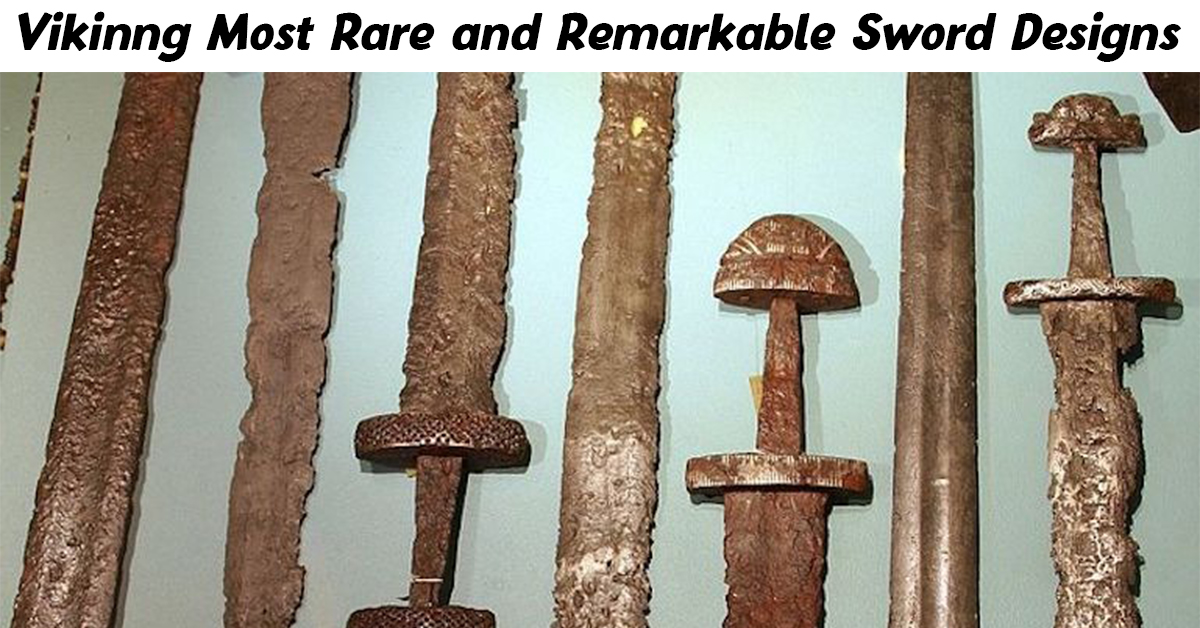Blog
Uncovering the Legacy of Ulfberht Swords

Viking weaponry enthusiasts revere Viking swords (especially Ulfberht swords). Inspired by the Roman Spatha or the Oakeshott type 10, these blades represent the zenith of Viking-age design. The early crossguard, straight or tapered, and the double-edged blade with a blunt tip reflect both practicality and deadliness. The most intriguing feature? The inscription “Ulfberht,” sparking historical debate about its origin. These Inscriptions on these swords made them more unique and a collector’s item as well.
Viking Weapon Blade:
The Ulfberht sword shrouds itself in mystery. This double-edged blade excels at slashing thanks to the high-quality steel it’s forged from. Unlike most swords of its time, Ulfberht blades likely benefited from a superior technique, granting them exceptional sharpness and durability. The inscription “+VLFBERH+T” on the blade adds to the intrigue. Historians believe it’s a Frankish name, possibly a master swordsmith or even a family dynasty.
Buy Premium Replica of Ulfberht Viking Sword
Ulfberht Viking Sword With Free Scabbard
The Ulfberht inscription wasn’t just a name – it was a mark of prestige! Viking warriors craved Ulfberht swords! Back then, the Franks were the kings of sword-making, and having their name on a blade was like a super fancy brand name today. Whoever Ulfberht was, whether a single amazing smith or a whole family of them, they made top-notch weapons. The secret? Super strong steel made these swords the most prized of the Vikings’ arsenal.
 Uses of the Ulfberht Sword:
Uses of the Ulfberht Sword:
This Viking sword wasn’t meant to be used alone! Designed for one hand, it was meant to be paired with a shield in the other, just like most weapons of its time. But what made it special? The blade itself was double-edged and crafted from incredibly strong steel. This lets the warrior slash and chop at enemies, or even deliver powerful thrusts. Even though the blade is wide, the Ulfberht sword is surprisingly light and easy to handle in battle. It was a favorite among Viking warriors because of its strength and quickness.
Viking Weapon of Choice: How the Ulfberht Sword Pierced Chainmail:
The Ulfberht sword was not just an ordinary sword; it was an elite weapon designed for combat. Back then, most warriors wore chainmail armor. The Ulfberht sword, with its high-quality steel, could slash right through that armor without breaking! The slightly wider blade also packed a bigger punch, making it even more deadly.
These prized swords weren’t just found in Viking lands, though. Archaeologists have discovered Ulfberht swords in places like Britain, Ireland, Poland, and even Spain! It seems Viking warriors weren’t the only ones who wanted this powerful weapon on their side.
More Than Metal: The Ulfberht Sword as a Symbol of Viking Prestige:
Legends about the Ulfberht spread swiftly, following in the footsteps of the renowned swords of the Carolingians. Due to its widespread fame, lords and noblemen in Scandinavia and throughout Europe considered it an essential weapon.
The Ulfberht was more than simply a weapon to the Vikings; it was a high status symbol. Winning these swords in battle or receiving them as gifts brought immense prestige. Warriors often buried Ulfberht swords with them, just like other valuable treasures. These swords were also passed down as heirlooms, becoming prized possessions for generations.
Trade & Sought After:
The Ulfberht was top-notch, made by the Franks and way ahead of its time. This high-quality blade became a symbol of wealth and power, so much so that Vikings raided for them! The Franks even banned selling them to Vikings, fearing their own weapon against them. But that just made Ulfberht swords even more desirable. There were even cheap knock-offs, but those broke easily in battle – not ideal for a Viking warrior! Today, archaeologists can spot the real deal, helping us piece together the story of this legendary Viking weapon. These rare swords are highly sought after by collectors today.
History of the Ulfberht Sword:
One well-known enigma weapon from the Viking age (850–1100 AD) is the Ulfberht sword. It is estimated that 170 of these swords with the name “Ulfberht” have been discovered. Ulfberht may have been a blacksmith, a company, or perhaps just a brand name; no one knows for sure who he was.
These swords were super strong and well-made, even ahead of their time! Warriors all over Europe prized them as possessions, particularly Vikings. Even today, people are still endeavoring to decipher the remarkable craftsmanship behind their production.
Origins:
The Ulfberth sword, a Viking-era legend (850 AD), is famous for its incredibly sharp, high-quality steel. The origin of this amazing metal is shrouded in mystery..
 Uses of the Ulfberht Sword:
Uses of the Ulfberht Sword:
